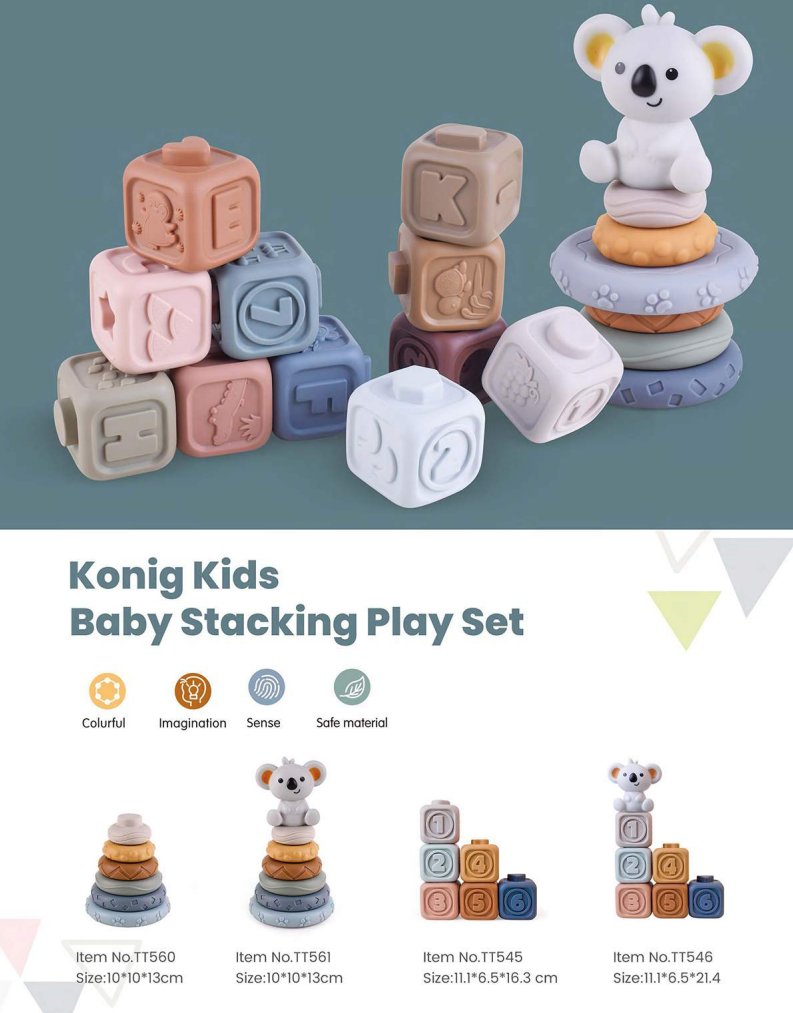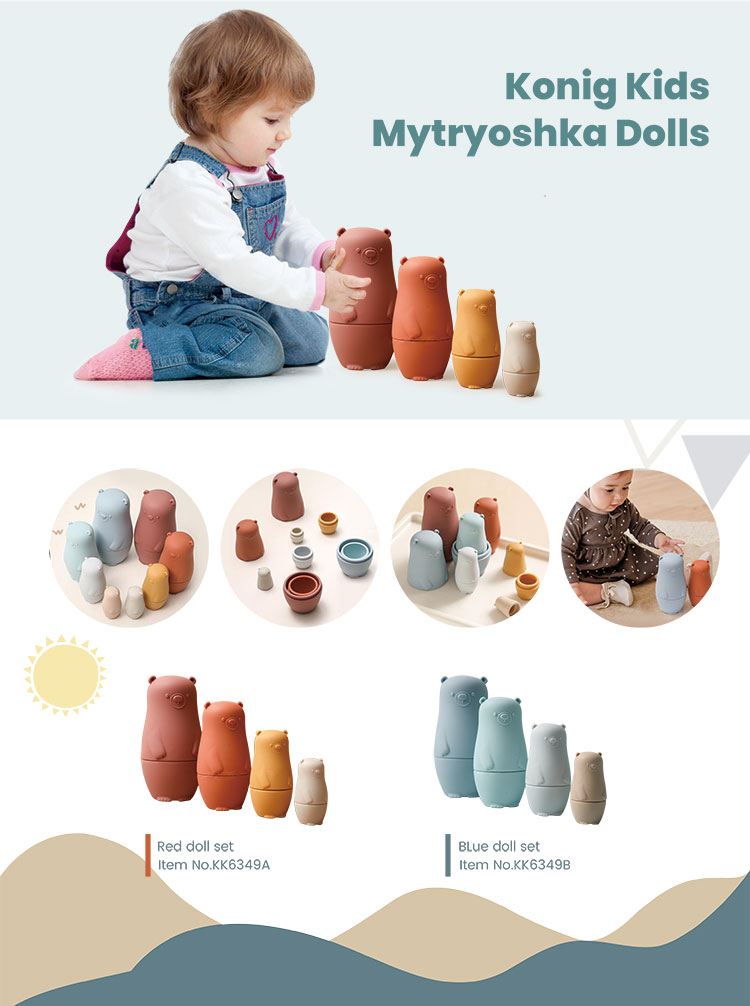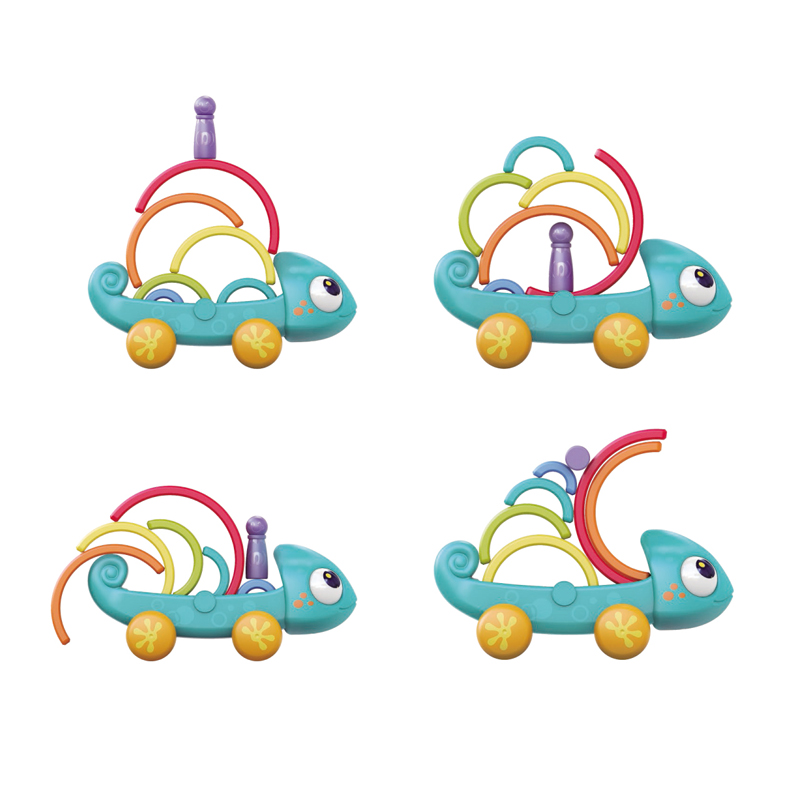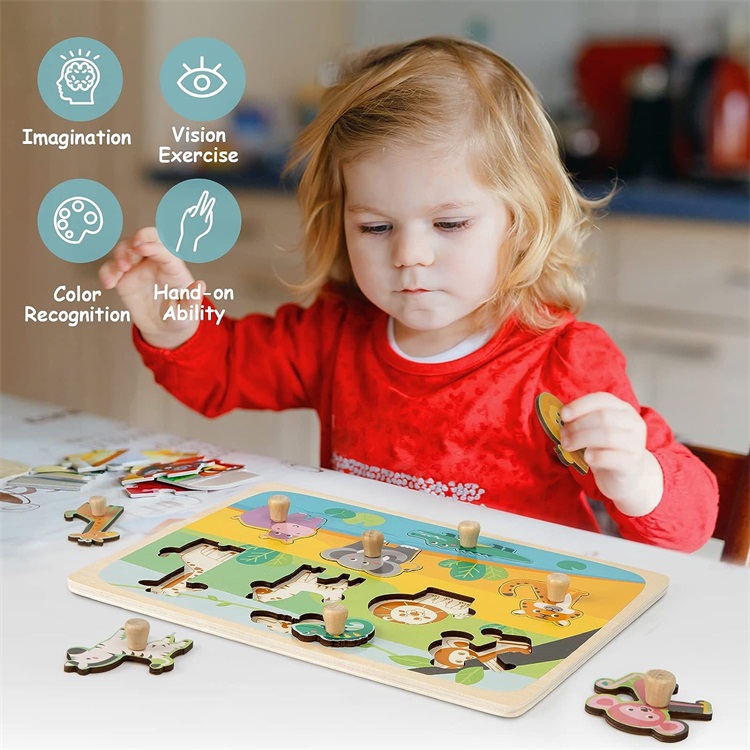Kids Development Must Have Stacking Toy
Introduction:
In the vibrant world of children’s toys, stacking toys have stood the test of time, captivating the attention of toddlers and parents alike. But these toys are more than just a source of entertainment. They are instrumental in fostering cognitive development in children, serving as a foundation for a lifetime of learning and growth.
Types of Stacking Toys
- Building Blocks
- Stacking Ring Toys
- Stacking Cups
- Nesting Toys
The Power of Stacking Toys:
Stacking toys come in various forms, from wooden blocks to colorful rings, each offering unique opportunities for learning. As children engage with these toys, they are unknowingly developing crucial skills that will benefit them in their academic journey and beyond.
- Fine Motor Skills and Coordination: The act of stacking requires precision and control. As children manipulate the toys, trying to balance one piece on top of another, they are honing their fine motor skills and hand-eye coordination. These skills are essential for tasks ranging from writing to buttoning a shirt.
- Problem-Solving and Logical Thinking: When a tower of blocks topples over or a ring doesn’t fit, children are faced with a problem. They must figure out how to stack the pieces correctly, fostering their problem-solving abilities and logical thinking. This early exposure to problem-solving situations prepares them for more complex challenges in the future.
- Spatial Awareness: Stacking toys help children understand the concept of space. They learn about size, shape, and balance, and how objects relate to one another in a given space. This understanding is fundamental to subjects like geometry and physics.
- Creativity and Imagination: While stacking toys may seem straightforward, they offer endless possibilities for creative play. Children can build towers, create patterns, or invent their own games, stimulating their creativity and imagination.
- Confidence and Self-Esteem: Every successful stacking attempt gives children a sense of accomplishment, boosting their confidence and self-esteem. They learn that they can solve problems and achieve their goals, fostering a positive self-image.
How to Interest a Child in Montessori Stacking Toys?
OK, you’re a happy parent of a tot and owner of a Montessori rainbow stacker. Now what? How to pique your kid’s interest in stacking?
- Introduce stacking toys gradually. To guarantee the best experience possible, don’t be in a hurry! Children need to be exposed to new toys for some time before they recognize and gladly grab them.
- Choose bright-colored toys. The little ones display a preference for such playthings and are more likely to get interested in the play.
- Join the game. Kids listen to you. They look at and imitate you. Your presence and genuine interest in the process will be catchy.
- Create a home game zone. Let your kiddo feel special by knowing there’s a well-equipped place in the house arranged and decorated for them exclusively.
- Let them be choice-makers. Since each piece of a rainbow stacker is of different size and color, give your child a chance to pick the color and build the structure in the manner they prefer.
Conclusion:
Stacking toys are more than just a fun pastime. They are a powerful tool for cognitive development, equipping children with essential skills while providing a platform for creative expression. So, the next time your child reaches for their favorite stacking toy, remember, they are not just playing; they are building a foundation for their future.
Post a Comment
You must be logged in to post a comment.









